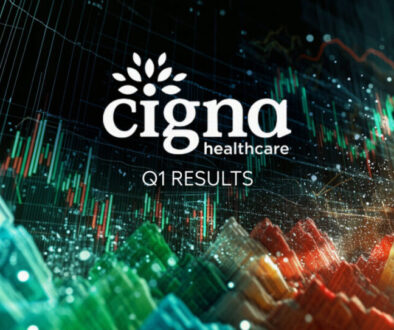Large decrease seen in insurance agency mergers and acquisitions
The once-ballooning insurance agency mergers and acquisitions market in the United States and Canada has deflated, showing a 27% drop in deal activity through the third quarter of 2023.
According to the latest report from OPTIS Partners, an investment banking and financial consulting firm specializing in the insurance industry, the decrease in M&A deals marks the largest decline ever for this period.
Multiple factors are cited for this sudden deceleration: rising capital costs, increased leverage, and a reduced pool of business owners willing to sell.
A shift in acquisition leaders
The landscape of top buyers has also seen a shift. Acrisure and PCF Insurance, for example, both former leaders in deal counts, dramatically reduced their deal activity by 81% compared to 2022. Stepping into the void are new leaders, with Broadstreet Partners and Hub International taking the lead with 43 and 37 transactions, respectively, year-to-date. Other major players include Inszone Insurance Services, Leavitt Group, World Insurance Associates, and Arthur J. Gallagher.
Four of the top 10 buyers completed fewer deals in the first three quarters of 2023 compared to the same period in 2022. Acrisure led the decline with a 66% reduction, followed by Hub International (down 31%), Patriot Growth Insurance Services (down 10%), and Keystone Agency Partners (5% lower).
Conversely, companies like Broadstreet Partners, Leavitt Group, Arthur J. Gallagher, and Risk Strategies Company have demonstrated substantial year-over-year growth, with percentages ranging from 35% to 87%.
Report ‘consistent’ with what’s being seen
Insurance executives say they are neither surprised by the study’s finding nor does it signal any long-term weakness in the markets.
“The report on deal activity is consistent with what we are seeing in the market,” said Mark Breading, senior partner with ReSource Pro, a New York-based insurance consultancy. “While there are certain firms that have slowed, there are others that continue with significant agency acquisition activity. While ‘only’ 172 deals took place in the third quarter, it is still quite remarkable given the current environment surrounding interest rates and capital markets.”
Breading said many firms that had been aggressive acquisitors over the past several years have taken the current opportunity to pause and focus on ‘optimization.’
“Many are now thinking more about enhancing enterprise capabilities and how to optimize people, processes, technology, and data for the benefit of their agencies,” he said.
The OPTIS Partners report categorizes buyers into four groups: private equity-backed/hybrid brokers, privately held brokers, publicly held brokers, and all others. The private equity-backed/hybrid group remains dominant, accounting for 67% of all transactions in 2023, a slight decrease from 71% in the same period in 2022. Privately held brokers increased their share slightly from 22% to 24%, while publicly traded brokers saw a modest increase from 5% to 6% of the total deals.
P&C-only agencies dominate sellers
P&C-only agencies continue to dominate the sellers’ market, representing 62% of the total 534 transactions. Agencies focused solely on employee benefits and those selling both P&C and employee benefits each contributed 12% to the total sales. Meanwhile, managing general agency (MGA) sellers accounted for 5% of the transactions, with the remaining 8% split among third-party administrators (TPAs) and sellers of life/financial services agencies, consulting, and other businesses associated with insurance distribution.
Franklin Manchester, an insurance strategic advisor at SAS, in Raleigh, N.C., says changes in interest rates, data quality, and sustainability, most impacted the insurance M&A market.
“Debt can no longer be financed at a rate commensurate with agency valuations,” he said. “At double the former rate, the valuation would have to come down significantly. This reduces the available targets but doesn’t eliminate them entirely.”
Growth, Manchester said, now needs to come organically, and not falsely inflated due to purchasing, so resources will be directed toward traditional means.
“This means staff at insurers will become valuable to brokers who need their skills and expertise…and one or more of the largest brokers will merge,” he said.
Yet, despite the substantial decline in the number of transactions, optimism remains within the industry. Dan Menzer, a partner at OPTIS, notes that numerous deals are still being closed, and many buyers, unburdened by debt, are increasing their deal flow. Tim Cunningham, managing partner, emphasizes that valuations are holding, especially for attractive sellers, and the demand from a robust group of buyers remains steady. The report suggests a return to a pre-bubble pace, anticipating the valuation environment to remain relatively stable, albeit with a potential softening for less attractive firms in the coming quarters.
“The economic change of rising interest rates and a reduction in the supply of sellers has fundamentally changed the value proposition that the insurance distribution business represents,” the report says. “It has not reduced the demand from a still robust group of buyers. We expect the valuation environment to hold rather steady, though we could see that soften slightly for less attractive firms over the coming quarters.”
For a detailed analysis and insights into the changing landscape of insurance agency M&A, the full report can be accessed here.
Doug Bailey is a journalist and freelance writer who lives outside of Boston. He can be reached at doug.bailey@innfeedback.com.
© Entire contents copyright 2023 by InsuranceNewsNet.com Inc. All rights reserved. No part of this article may be reprinted without the expressed written consent from InsuranceNewsNet.com.
The post Large decrease seen in insurance agency mergers and acquisitions appeared first on Insurance News | InsuranceNewsNet.



